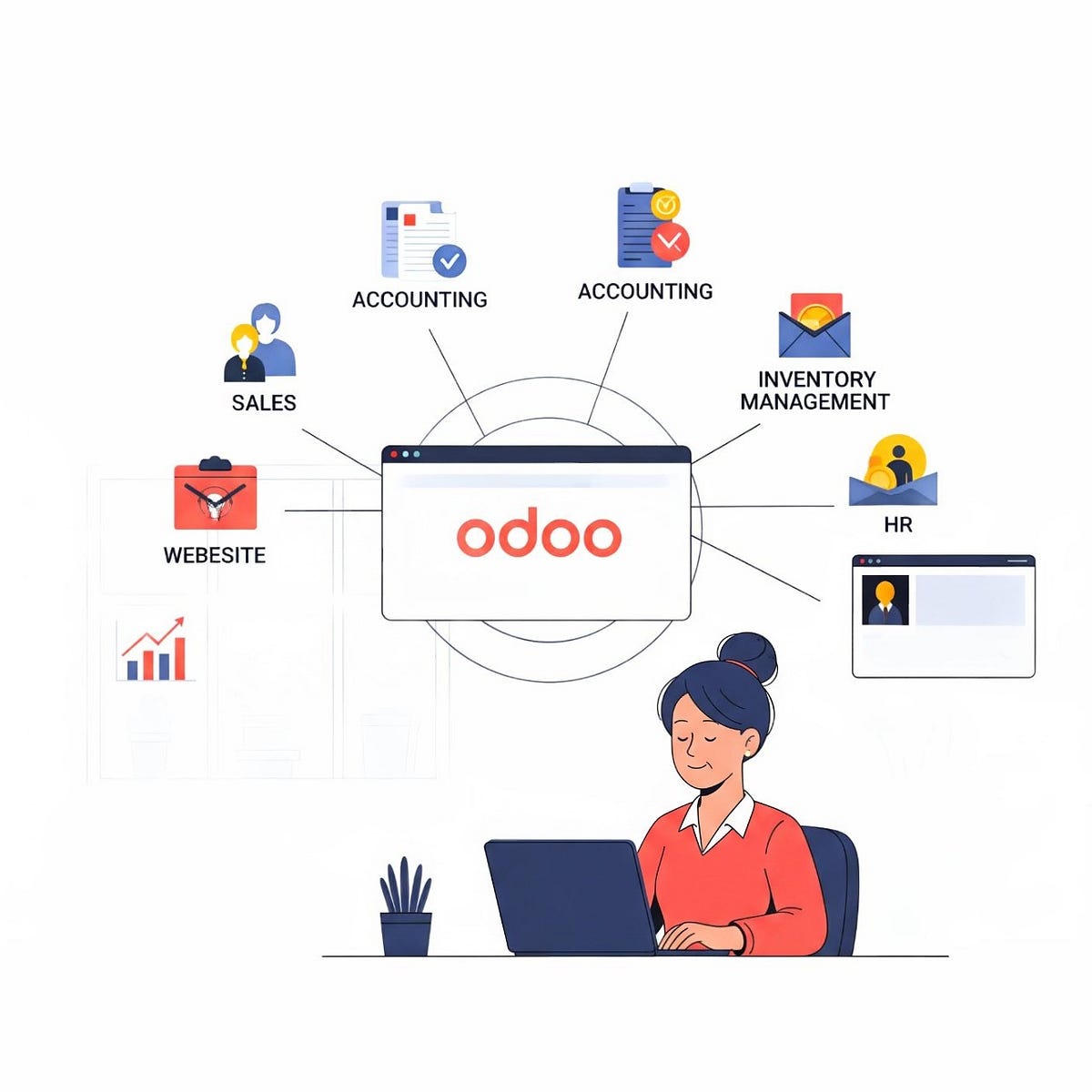The Challenges Canadian Businesses Face Today
Canadian businesses are dealing with rising operational costs, evolving customer expectations, supply chain delays, and the pressure to manage everything across multiple disconnected tools. Many teams use spreadsheets, scattered apps, and manual processes that slow down productivity. As businesses in Canada grow, these gaps become more visible and begin to limit revenue potential. Leaders are now looking for systems that help them streamline operations without adding complexity.
Explaining ERP in Simple Terms
An ERP is a central platform that brings every core function of a business together. Instead of switching between tools for sales, inventory, accounting, customer service, and HR, everything sits under one digital home. The result is consistency, faster work, and better decision making because information flows from one department to another in real time.
What Makes Odoo Different from Traditional Systems
Odoo stands out because it delivers enterprise level capabilities without the heavy structure, long timelines, and high cost of traditional ERP systems. Instead of forcing businesses to adapt to rigid workflows, Odoo adapts to the business. Canadian companies appreciate Odoo because it offers seamless modularity, intuitive design, strong localization, and the flexibility to grow gradually instead of all at once.
Key differences include:
• A modular system that allows companies to start small and expand as needed
• A unified platform that links every department
• Fast implementation that does not disrupt operations
• Customizable workflows that reflect real business patterns
• Lower ownership cost compared to legacy ERP systems
Examples of Problems Odoo Solves for Canadian Small and Medium Businesses

Canadian SMEs often reach a point where manual tools can no longer keep up with demand. Odoo helps solve issues such as:
• Inventory errors that lead to lost sales
• Manual accounting that slows down reporting
• Customer management scattered across multiple apps
• Inconsistent communication between departments
• Workflow bottlenecks caused by disconnected tools
• Data entry done many times by different teams
• Difficulty forecasting sales and planning supply
• Lack of real time visibility across the company
A retail store in Ontario uses Odoo to manage inventory across multiple locations without manual reconciliation. A logistics company in Alberta uses Odoo to track shipments, fleet activities, and customer communication from one dashboard. A service business in British Columbia uses Odoo CRM to automate follow up, proposals, and invoicing.
How Canadian Businesses Can Know If Odoo Is a Fit
A company is ready for Odoo if:
• Teams rely heavily on spreadsheets
• Processes are repeated manually every week or every month
• Departments are working in separate apps that do not sync
• There is no single source of truth for data
• Growth is happening faster than systems can handle
• Managers want better visibility and reporting
• Customers are expecting quicker service or better communication
• Leadership wants to scale without adding unnecessary overhead
If these signs appear consistently, Odoo can provide immediate value.
Join Us on December 12 for the Odoo Transformation Event
Businesses across Canada are trying to understand when and how to move toward an integrated ERP system. This session is designed to make the decision easier. You will see real examples, practical workflows, and a clear roadmap for adopting Odoo with confidence.
Reserve your spot for the December 12 event and learn how to streamline your operations using Odoo.
